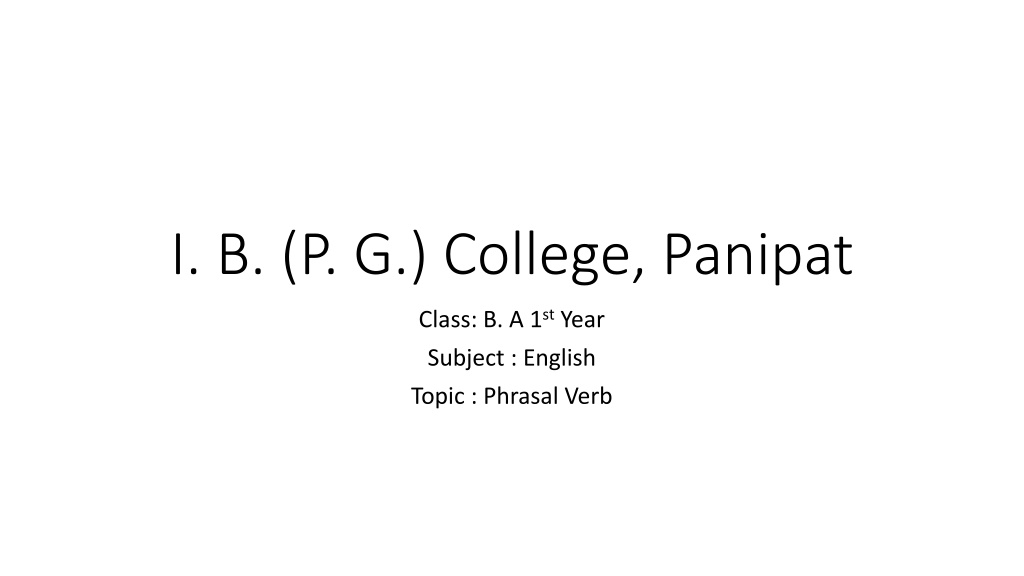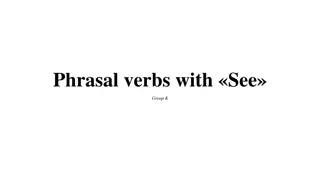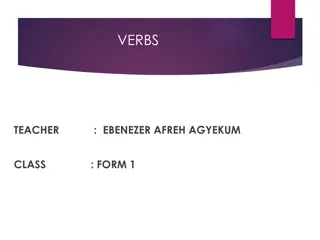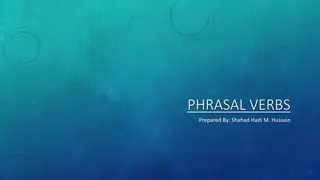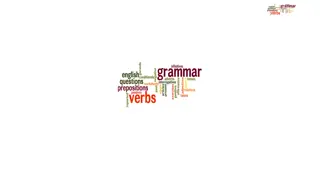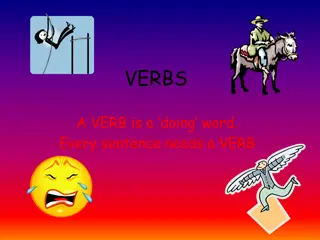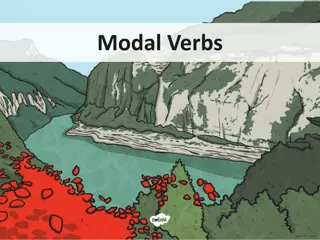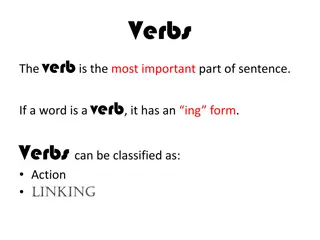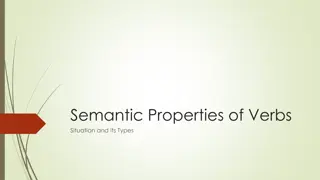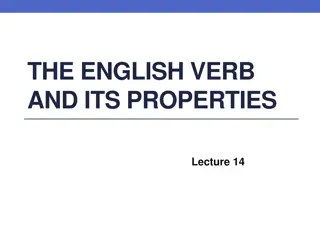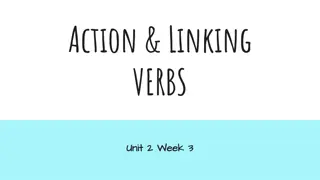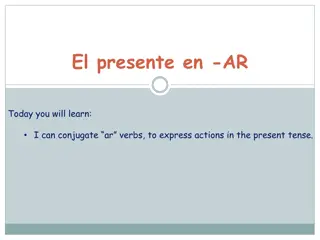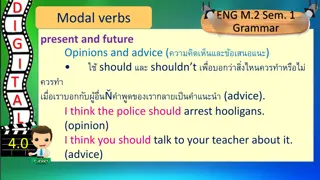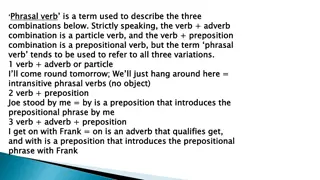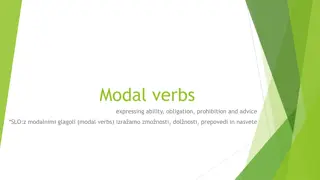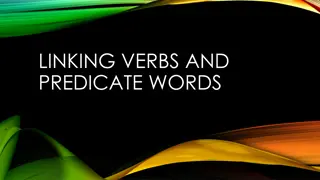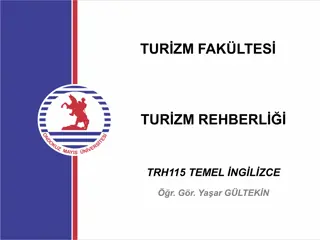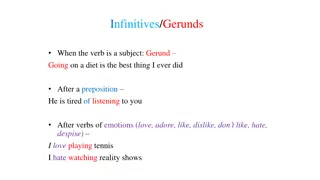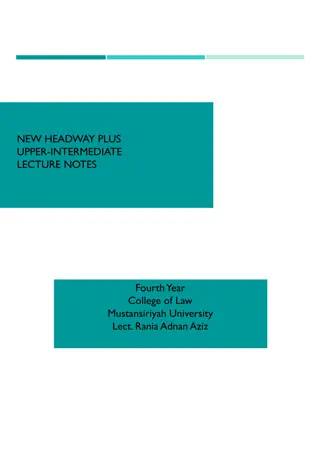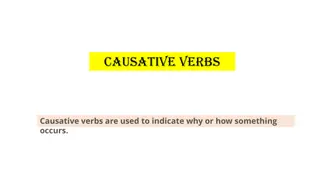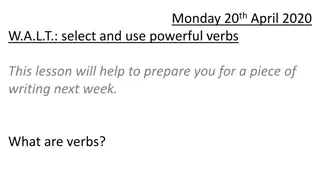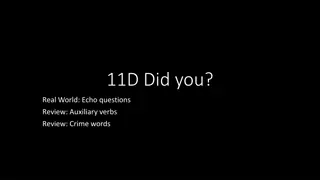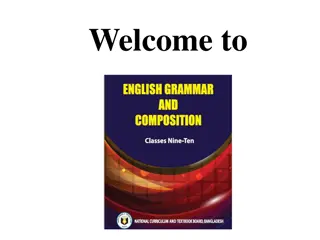Understanding Phrasal Verbs in English
A phrasal verb is a combination of a verb and a preposition/adverb that forms an idiomatic expression with unique meanings. They can be intransitive or transitive, and the position of the object in phrasal verbs varies. Learn about the different types of phrasal verbs and how they are used in sentences.
Download Presentation

Please find below an Image/Link to download the presentation.
The content on the website is provided AS IS for your information and personal use only. It may not be sold, licensed, or shared on other websites without obtaining consent from the author. Download presentation by click this link. If you encounter any issues during the download, it is possible that the publisher has removed the file from their server.
E N D
Presentation Transcript
I. B. (P. G.) College, Panipat Class: B. A 1stYear Subject : English Topic : Phrasal Verb
Presented By Professor Versha Department Of English
1. What is a Phrasal Verb ? A phrasal verb is a verb and preposition / adverbial particle which acts like an idiomatic expression.A verb can offer a variety of meaning when it is attached with a preposition or an adverbial particle. Each phrasal verb forms a unit of meaning. For Example : Bring about = cause to happen Bring our = bring to light Bring up = to rear 2. Position of object in Phrasal Verbs: (a) Noun objects are placed at the end of the phrasal verb or before the preposition /adverbial Particle. For example :
( c) A long object usually goes after the adverb / preposition. The wind blew away everything that was lying on the roof. MAJOR TYPES OF PHRASAL VERBS 1.Intransitive phrasal verbs with adverbs: These are generally a combination of verbs and adverbs. They are used in intransitive clauses. For example : Prem went away for a few days. The driver must have dozed off.
2. 2. Intransitive phrasal verbs with prepositions: Intransitive phrasal verbs with prepositions: Many phrasal verbs used in intransitive clauses are a combination of verbs and prepositions. Noun groups that usually follow these phrasal groups are objects of the prepositions and not the objects of the verbs directly : When we asked for directions to the India Gate Medical tourists now account for nearly one-fourth of all tourists. 3. Either preposition or adverb: In an intransitive clause, when the second thing involved needs to be mentioned, the second word of the phrasal verb can be a preposition; in case, the second thing is clear from the context and need not be mentioned, the second word of the phrasal verb can be an adverb : I saw a soldier who had lagged behind the others. After a while, I felt that he was deliberately lagging behind.
4. 4. Transitive phrasal verbs : Transitive phrasal verbs : The phrasal verbs which take direct objects are always used in transitive clauses and are called transitive phrasal verbs consisting of transitive verbs and adverbs : I left my backpack behind and took only a handbag. The cat followed the mouse down the stairs. 5. Phrasal verbs used both transitively and intransitively: A very large group of phrasal verbs falls in this category. One important reason for this is that many phrasal verbs have more than one meaning. Look at the following examples:
The aeroplane took off. Rama took off her coat If the room is locked, I will try to break in. Rama likes to break in his assistants slowly. 6. Ergative phrasal verbs: An ergative verb is a verb that can be either transitive or intransitive, and whose subject when intransitive corresponds to its direct object when transitive. In such cases, we can use the object of the phrasal verb in the transitive clause as the subject of the verb in the intransitive clause.
For example For example I will not wake her up just yet. He woke up in the middle of the nigh. Can you count all the leaves that have been blown off these trees? Rama s hat blew off.
Thank you Thank you
